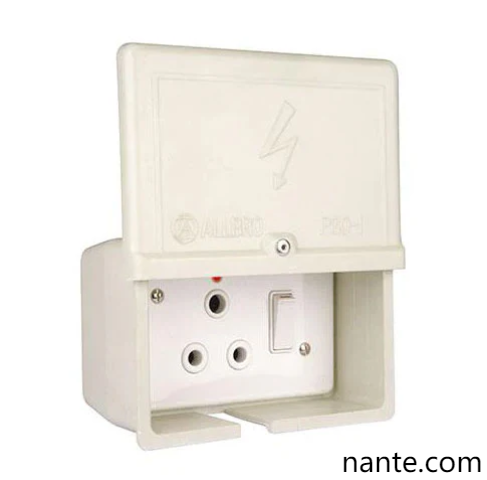In the evolution of sustainable architecture, the Electrical Socket Box has transitioned from a basic utility fixture to a strategic asset for energy optimization. These enclosures now serve as intelligent Electrical Socket Box systems that coordinate power flows while aligning with green building principles. By redefining the role of the Electrical Socket Box, architects and engineers can transform passive electrical networks into responsive ecosystems that minimize waste and maximize efficiency.
Intelligent Energy Management
Contemporary units integrate adaptive load-sensing technology to eliminate phantom power drain. Microprocessors analyze usage patterns, automatically disconnecting idle circuits for appliances like conference room projectors or lobby displays. In residential towers, circadian lighting controls embedded within the units adjust brightness based on natural light levels, reducing consumption during daylight hours. Some models even synchronize with renewable energy sources, prioritizing solar-stored power during peak tariff periods.
Design Synergy with Sustainable Architecture
Modern enclosures now complement eco-conscious interiors through material innovation. Recycled aluminum alloy housings with powder-coated finishes mimic brushed concrete or reclaimed wood textures, blending with biophilic design schemes. Slim, tamper-resistant profiles allow recessed installation in adobe walls or straw-bale constructions without compromising thermal performance. For transparent energy reporting, select units feature LED indicators that visualize real-time consumption through color gradients—subtle reminders of a building’s energy narrative.
Durability Meets Climate Resilience
High-performance units are engineered for extreme environments. Hermetic seals prevent moisture ingress in tropical climates, while aerogel-insulated models maintain functionality in sub-zero temperatures. Fire-retardant composites with self-extinguishing properties enhance safety in high-rise applications, meeting stringent smoke and toxicity standards. These features ensure reliable operation across passive houses, net-zero communities, and retrofitted heritage structures.
Streamlining Green Certification Compliance
While avoiding specific program names, advanced units support compliance with global eco-certification frameworks through traceable documentation. Embodied carbon labels validate material sourcing, and modular designs facilitate disassembly for future reuse. Third-party verified energy-saving metrics help projects qualify for efficiency incentives, turning enclosures into value-engineered assets rather than cost centers.
Adaptive Integration Across Building Types
From smart campuses to eco-resorts, these hubs enable context-specific optimization. In educational facilities, USB-C ports with occupancy sensors power devices only when classrooms are active. Hospitality projects utilize moisture-resistant units with integrated air quality monitors in spa areas, aligning luxury with sustainability. Industrial retrofits employ EMI-shielded models that prevent interference with sensitive automation systems.
For professionals seeking to harmonize electrical infrastructure with ecological objectives, www.nante.com offers curated solutions that redefine power distribution. Their product lines exemplify how thoughtfully engineered enclosures can quietly elevate a building’s efficiency—proving that even the most commonplace components can drive meaningful environmental progress.

